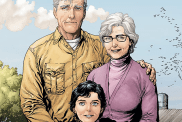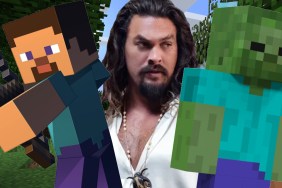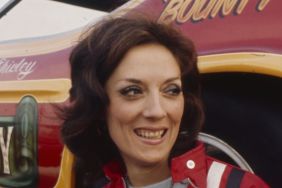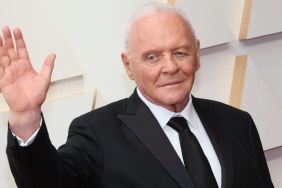
Veteran screenwriter Lawrence D.Cohen remembers making the original IT.
Throughout Hollywood history, many screenwriters have had the daunting task of adapting a critically acclaimed and much loved best seller into a workable shooting script and subsequent film. They are faced with having to modify certain passages from the preexisting material, omit certain events and sometimes completely change what goes on in the story, all to serve the nature of a filmic interpretation.
When the writer is a huge fan of the said novel, it may prove to be an even more intense job, but for Lawrence D. Cohen, who had previously penned the superlative screenplay for Stephen Kings CARRIE, taking on the celebrated authors monstrously sized novel that featured a group of misfit children battling a menacing evil embodied in a frightening killer clown was something to enjoy.
While fans are buzzing about the now in-production remake, SHOCK spoke with the original’s screenwriter to dissect what is now a horror classic.
SHOCK: How did you and fellow writer and director of the project Tommy Lee Wallace set out to adapt Stephen Kings mammoth book? What was decided early on? What are some examples of what was scrapped immediately, what was workshopped to fit in a miniseries format and what were definite keepers narrative wise?
COHEN: I had the good fortune of being hired as the writer very early onto the project by executive producers Frank Koenigsberg and Larry Sanitsky back in 1986 or 1987. Id written CARRIE, and they contacted my agent to ask if I might be interested in adapting this as a miniseries for ABC. I was living in New York, and they FedExed me this 1200 page manuscript that must have weighed four or five pounds! It was a doorstopper of a book so big it arrived in two separate packages. While daunting in sheer length, it was also thrilling in its very excess and ambitious time-span. I read the first dozen or so pages set in 1957 in which young brothers Bill and Georgie Denbrough are introduced, ending with Pennywise making his first appearance to claim Georgie as his victim. Thats followed by what seems to be an unrelated gay-bashing 28 years later, also involving Pennywise and, as with a lot of Steves stuff, I was totally hooked. I instantly saw the movie in my mind. Steves just a uniquely great storyteller and the events were so visual and visceral and emotional. Long story short, without reading another word, I said yes to adapting it. I hadnt felt this way since I read the first few pages of CARRIE with its similarly mosaic-like opening of the newspaper story of the stones falling on Carries house when she was a little girl, her period in the showers, and the scientific journal excerpt about telekinesis. I mean, damn, Stephen King knows how to hook the reader!
I raced through the rest of the book on a flight out to L.A. to meet with Frank and Larry and discuss an approach to adapting it. At that point, the sky was the limit there was no restriction as to how many hours the miniseries was going to be 8, 10, even 12 – and the guys already had George Romero in mind to direct. I thought he was a genius match for this particular piece. As the creator of NIGHT OF THE LIVING DEAD, he was an amazing talent in his own right, and given his prior King association with CREEPSHOW, he was a natural and sexy choice that further psyched me about wanting to do the project.
At ABC, we sat down with the Vice-President in charge of miniseries. She listened to my enthusiasm and thoughts about the material, and then said she only had one question what is It? I did my best to answer, and without a beat as if Id gotten the answer wrong, she asked again, yes, but what is It? I must have tried half a dozen answers a psychological manifestation of our worst fears, a shape-shifting horror monster, you name it – but every time I finished, shed ask again: What is It? What is It? It was like a comical version of that brilliant nightmare litany in MARATHON MAN in which Laurence Olivier keeps asking Dustin Hoffman Is it safe? Is it safe? before he pulls his teeth out. I never know what the answer she was looking for, but I kept my teeth and got the job.
I then worked with Romero on the project for the better part of a year, and that was incredibly gratifying to have the director whos actually going to make the piece involved that early in the writing process, especially a director like George who also had a first-rate screenwriters mind. We both quickly and excitedly realized that the book lent itself to what was then the exact miniseries format dividing up every night of two hours into seven acts, which turned out to be perfect because there were seven main characters in Steves story as kids and then as adults, and each could have his or her (in Bevs case) own little act.
Today, of course, there are virtually no more network miniseries aside from the occasional import like DOWNTOWN ABBEY, and precious few movies of the week and the few that remain seem to have commercial breaks every six minutes. But back in 1980s, it was a rich and gratifying form the luxury of presenting at length a true novel for television. George and I worked on a Bible for the piece laying out the entire story as a detailed blueprint with act breaks and everything. When we began, the plan was to run 10 hours. A little at a time, the network lost its nerve and cut back from 10 to 8 which started to worry us. While many miniseries are too long and outstay their welcome, this was IT – a horror magnum opus that deserved no, demanded – a marathon rather than a sprint. Four nights felt just about perfect still an event – only for us to learn it would now be six. At that point, we lost Romero who felt we were diluting the heft of what made IT Kings IT that if there ever was a case for more is more, IT was it! Finally, I think ABC was nervous about the whole risk and huge outlay of money, plus the thematic notion of children in jeopardy thats central to this piece and announced we wed be a 2-night, 4-hour event. Frank and Larry proceeded to have a disagreement with them and the financing entity over the license fee and budget at which the piece could be made well and bowed out as the projects active producers.
Somewhere during this phase after Romeros exit, Tommy Lee Wallace came in to meet with us, and was hired as director. He asked me to do a production rewrite, especially on the second half in which the adults return to Derry. At that point, though, Id moved on to write two other projects. Also, having the project cut down was worrying, and the prospect of working without my collaborators caused me to lose some of my initial excitement that we were doing something ground-breaking. I wished Tommy Lee and the project well, and moved on. Tommy Lee did a subsequent redraft himself, and we shared writing credit on Part II as adapters.
Long story short, the miniseries was telecast and went through the ratings roof, with People Magazine naming it one of the Top 10 television events of the year, and USA calling it the scariest movie ever made for TV. My favorite ironic postscript was that the head of Cap Cities, the parent company of ABC, did a subsequent interview in which he said his one wish for the year was that IT had been longer.

SHOCK: Was there a scene from Kings novel that had to be in the teleplay but just proved too difficult to churn out? What kind of writing process did you adopt in order to flog out this troublesome sequence?
COHEN: Truthfully, adapting Steve in general and in particular this huge book with its brilliant narrative idea and its grab bag full of goodies was a joy. My biggest regret was to have to eliminate scenes for length. Gorgeous set pieces and sequences that were expendable because the narrative could exist, strictly speaking, without them. There were a surfeit of riches, and it pained me to lose them.
In retrospect, the only scene that proved difficult, not to write, but to execute, was the final confrontation in which the identity of Pennywise under all his multiple faces is revealed to be spoiler alert – ta-da – a giant spider. All my usual fidelity in spirit if not in letter to Steves books, I think Id have tried to find a way to change this. Had I been on set during production, Im sure Id have said with all this time invested in the story, thats it or It thats the best youve got? After all of Pennywises ingenious shape-shifting manifestations, the actual reveal felt like a letdown. This was something Steve could get away with in the writing, but once it left the realm of the readers imagination and had to be actualized – and with only a meager television budget to boot – this super beast could never be on a par, say, with something like ALIEN. So much for regrets.
SHOCK: Was it fun to write Pennywise? How did you go about carefully blending his sadistic menace with maniacal comic frivolity?
COHEN: Writing him was some of the most sensational fun Ive had. One of the many things that Steve excels at is writing villains that give you nightmares be it the possessed Jack Torrance axing down the bedroom door in THE SHINING, Annie Wilkes wielding an axe in MISERY, Randall Flagg THE STAND or Margaret White with all her complexity as monster/mother insanity in CARRIE. Steves genius in IT was that he tapped into our childhood fear of clowns, and then treated him like a scene-stealing stand-up comic with sensational dialogue that I did my best to incorporate and preserve. He was a bigger-than-life, bravura role, and Tim Curry nailed him indelibly.

SHOCK: Which did you prefer to work on – writing the story concerning the adults or taking on the children element?
COHEN: The kids! They just killed me on the page! They made me believe in them, they made me care and suffer for them, and they made me cry. The truth is if there had never been an adult half to this novel, Id have jumped at the chance to put these kids on screen. Steves one of the best writers ever to capture childhood, period. Just think of the kids in STAND BY ME and how they still live in our hearts and minds. Even in his sixties, hes still utterly in touch with his childhood - with the magic and wonder and demons that come with that period in our lives. IT was his magnum opus about how as kid we all have imagination and power, but lose our way as adults in the world. This gang of Losers he created who come together to do battle against unspeakable evil were written with enormous skill and sensitivity, and the truth is, I could have just watched their story alone monster or no monster.
Next week, SHOCK delivers more exclusive IT goodness when we talk to director Tommy Lee Wallace…stay tuned!









